As an event, the World Baseball Classic has unques-tionably been a worldwide success . . . in spite of being a relative failure in its biggest market.

From a broad perspective, the event immediately became the greatest international baseball tournament of all time. It has helped spread baseball around the world. Although it’s impossible to fully apportion how much credit the WBC should get for the spread of Major League Baseball internationally, there are merchandise sales, television contracts and even new baseball stadiums to prove its worldwide impact. It also helped get baseball back in the Olympics.
The event has drawn outstanding TV ratings in places as varied as South Korea and the Dominican Republic. It has proven that baseball has much more parity than suspected. In its first three iterations, eight different countries have made the semifinals.
And it has made money. The WBC has been profitable since the first tournament in 2006. It has also doled out money to baseball federations around the world. As a brand-building event around the globe, the WBC has been a winner. It’s not entirely coincidental that Korea, a semifinalist in 2006 and finalist in 2009, now has more players playing in Major League Baseball.
“The WBC from the first time was a tremendous success,” said Paul Archey, the former MLB senior vice president of international baseball operations. “(That’s) how it was pitched to owners. We didn’t create this event for the United States. It wasn’t for baseball to be more popular here. It was to give baseball a global platform. The No. 1 objective was to raise the profile of baseball around the world.”
If the goal was for the Classic to make an impact in the U.S., the event has been a failure. Television ratings in the U.S. barely make a blip. A U.S. audience hoping to see Clayton Kershaw and Mike Trout hasn’t gravitated to seeing the Christian Yelich and Drew Smyly compete for the title.
This story is from the {{IssueName}} edition of {{MagazineName}}.
Start your 7-day Magzter GOLD free trial to access thousands of curated premium stories, and 9,000+ magazines and newspapers.
Already a subscriber ? Sign In
This story is from the {{IssueName}} edition of {{MagazineName}}.
Start your 7-day Magzter GOLD free trial to access thousands of curated premium stories, and 9,000+ magazines and newspapers.
Already a subscriber? Sign In
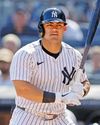
THE SERVICE TIME CONUNDRUM
MLB’s byzantine service time rules cloud rookie status and now PPI eligibility
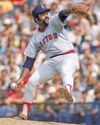
LUIS TIANT WAS MLB'S MOST SUCCESSFUL CUBAN PITCHER
On a scouting trip to Cuba in 1957, Bobby Avila discovered 16-year-old righthander Luis Tiant on the island's Juvenile League all-star team.

ORGANIZATION REPORT
Outfielder Heston Kjerstad's career has been unique, to say the least.

TOP 10 NL EAST
From the moment Thomas White stepped on a high school mound, he was viewed as the top lefthander available in the 2023 draft.
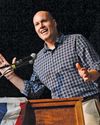
PREPARATION PAYS OFF
lowa politician J.D. Scholten makes a surprising return to pro ball at age 44

MAKING THE GRADE
Assessing the future value of graduated National League prospects
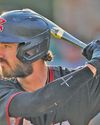
TOP 10 NL WEST
Even in high school, Bryce Eldridge could hit the ball a mile. The 6-foot-7 righthander could also touch 96 mph off the mound.
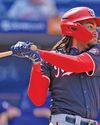
Wood Has Towering Upside- Nationals rookie James Wood also stands 6-foot-7 and also has game-changing power.
Aaron Judge and Oneil Cruz are 6-foot7 sluggers who stand out for their power in this year’s MLB Best Tools voting. Wood spent half of this season with Triple-A Rochester before making his MLB debut on July 1. While he was in the International League, he captured managers’ attention. Wood unanimously won Best Power Prospect and also claimed Most Exciting Player in a survey of league skippers. Wood hit .353/.463/.595 with 10 home runs in 52 games for Rochester. His .242 isolated slugging was the best for a player 21 or younger at Triple-A this season.
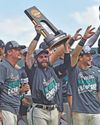
ROAD BLOCK?
Scholarship expansion puts mid-majors at a major disadvantage on the road to Omaha

ROYALS REVIVAL
A revamped and rejuvenated farm system has Kansas City ready to rebound